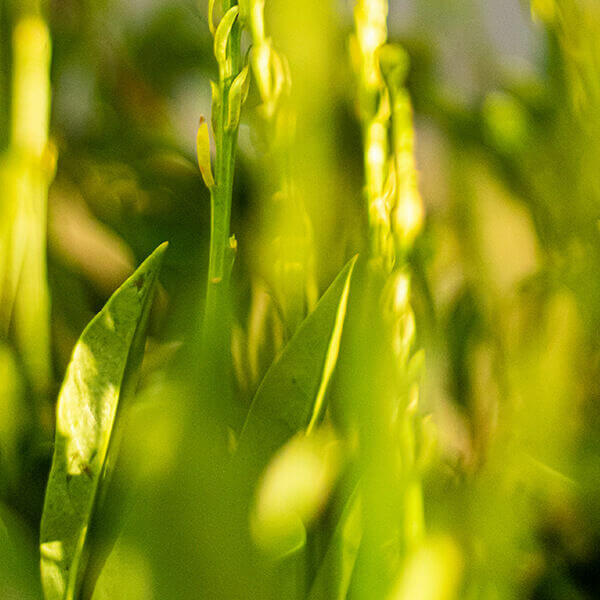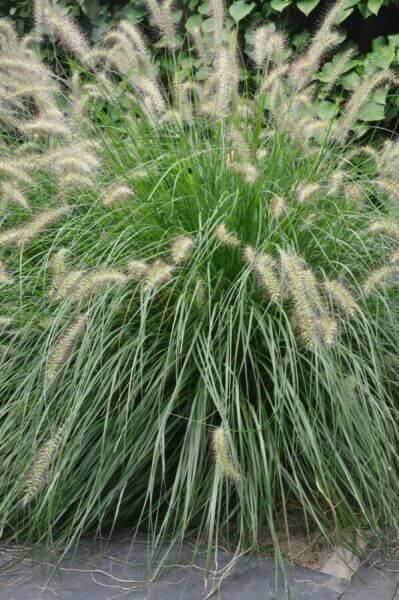Best Hedge Plants For Slopes
Best Hedge Plants For Slopes
Blog Article
Hedge Plants For Summer Color
Enhance your garden's allure with lavish hedge ranges such as Yew (Taxus), Thuja, Laurel, Photinia, and Bamboo, commemorated for their structural integrity and ecological advantages.
Yew and Thuja provide evergreen protection and winter strength, while Laurel offers fast development and broad, fragrant leaves.
Photinia includes seasonal beauty with its vibrant red foliage, and Bamboo provides a low-maintenance, tranquil ambiance.
These hedges improve air quality, lower noise, and produce tranquil, personal areas.
Proper planting, spacing, and maintenance guarantee energetic development and ecological harmony.
Check out how these rich ranges can elevate your garden's charm and wellness.
Secret Takeaways
Transform Your Garden With Lush Hedge Varieties
- Select Yew for its dense, evergreen growth and unequaled durability.
- Opt for Laurel for its fast growth and broad leaves, guaranteeing fast personal privacy.
- Choose Photinia for its dynamic seasonal foliage, which turns a striking dark red.
- Use Bamboo for a low-maintenance, winter-hardy hedge with visual appeal.
- Area plants 2-3 per meter and prune frequently for optimum development and health.
Popular Hedge Plants
When changing a garden with lavish hedge ranges, it's essential to consider popular hedge plants such as Yew, Thuja, Laurel, and Photinia due to their unique characteristics and benefits.
Yew (Taxus) is highly esteemed for its longevity and dense, green development, making it a prime option for sustaining landscapes.
Thuja is kept in mind for its evergreen foliage and robust winter season durability.
Photinia includes seasonal vibrancy with red leaves that darken gradually, producing dynamic visual appeal.
Laurel offers rapid growth and aromatic, broad leaves, perfect for fast personal privacy.
Furthermore, Bamboo is an outstanding choice for atmosphere, using a low-maintenance, winter-hardy alternative that improves the garden's aesthetic with its elegant, swaying canes.
These choices accommodate a variety of horticultural needs and choices.
Advantages of Garden Hedges
Garden hedges offer a multitude of advantages, making them an important addition to any landscape. These natural barriers are affordable to implement and supply substantial wind security, enhancing air flow and contributing to sound decrease. The dense foliage of hedges like Thuja and Beech makes sure privacy by blocking exposure, creating a secluded and peaceful environment.
Hedges also play an essential role in microclimate regulation, supplying a stable environment that fosters plant growth and lessens temperature fluctuations. Their detailed leaf structures filter pollutants, improving air quality and adding to a much healthier garden environment.
Moreover, hedges excel in noise decrease, absorbing and deflecting sound waves to lower ambient sound levels. This double functionality of supplying both acoustic and visual privacy improves the total tranquility and visual appeal of any garden.
Planting and Upkeep Tips
For a successful hedge, meticulous preparation of the planting area is essential. Make sure the soil has correct pH and drain to support strong root advancement.
Space the plants appropriately for the chosen species. Water the hedge often during its preliminary growth phase, adjusting as required with seasonal changes.
Implement a systematic insect control and disease prevention strategy, utilizing chemical or natural treatments when necessary. Regularly inspect for aphids, termites, and fungal infections.
Apply mulch to retain wetness and reduce weeds. Seasonal pruning promotes thick development and air flow, vital for plant health.
Following these standards will help you cultivate a vibrant, well-kept hedge that improves the beauty of your garden.
Spacing and Trimming Standards
Spacing and Cutting Guidelines
Proper spacing and cutting are important for cultivating healthy, visually appealing hedges. Adequate spacing ensures each plant gets adequate nutrients, light, and airflow.
Follow these standards for ideal hedge upkeep:
- Spacing: Position hedge plants 2-3 plants per meter to motivate robust growth.
- Pruning Strategies: Regular pruning is essential for keeping preferred hedge height and shape. Trim brand-new growth in summer season and cut back older wood throughout winter.
- Seasonal Care: Change cutting techniques and schedules according to seasonal requirements to ensure plant health.
- Hedge Height: Frequently monitor and cut to preserve the wanted hedge height and accomplish consistent aesthetic appeals.
Sticking to these actions will ensure your hedge grows, enhancing both the appeal and performance of your garden.
Choosing the Right Hedge
Selecting the Right Hedge
Picking the suitable hedge involves assessing aspects such as fully grown height, foliage density, and environmental durability. Effective hedge plant choice needs understanding each species' development characteristics and site-specific adaptability.
For example, Yew (Taxus) offers exceptional longevity and thick growth, while Thuja is notable for its winter season durability. Furthermore, considering maintenance requirements is vital; fast-growing types like Laurel or Privet need regular cutting, whereas low-maintenance options like Bamboo or Ivy might be preferable for those looking for minimal maintenance.
Environmental elements such as soil type, light accessibility, and moisture conditions should likewise guide the choice process. This careful approach guarantees the selected hedges will grow, providing both aesthetic and functional benefits to the garden landscape.
Delivery and Planting Guidance
To guarantee your hedge plants grow, they must be provided by specialized couriers and planted promptly upon arrival.
Follow these essential steps for successful planting:
- Soil Preparation: Enrich the soil with organic matter to improve drain and nutrient material.
- Planting Depth: Create a trench twice the width and equivalent to the depth of the root ball.
- Watering Techniques: Water completely after planting, keeping the soil consistently moist however not filled.
- Mulching: Apply a layer of mulch to maintain moisture and suppress weeds.
Customer Assistance and Service
Offered the essential role of prompt help in horticultural pursuits, our consumer assistance team is readily available 6 days a week through telephone, email, and social media to offer expert advice and promptly resolve any issues. Their dedication to quick response times ensures customer satisfaction by solving questions connected to plant health, optimum planting techniques, and maintenance schedules.

Availability
-------------------
Within 24 hours
This detailed support group, enhanced by a stellar 9.3/ 10 customer rating, highlights our commitment to improving the gardening experience for each customer.
Regularly Asked Concerns
The Length Of Time Does It Consider Hedge Plants to Develop?
Hedge plants usually need one to 3 years to Article source end up being totally developed, with the specific period differing by types and growing conditions.
Efficient care during this crucial period is important for robust growth. Consistent watering, vigilant weed control, and appropriate fertilizer application are pivotal in promoting strong root advancement.
For instance, fast-growing types like Laurel might establish faster, while slower-growing varieties such as Yew may take longer. Thorough upkeep accelerates the establishment procedure, leading to thick and healthy hedges.
What Are the Best Hedge Plants for Personal Privacy?
The question of the finest hedge plants for personal privacy involves evaluating evergreen and deciduous options.
Evergreen hedges like Thuja, Laurel, and Cypress supply year-round protection, guaranteeing continuous personal privacy.
In contrast, deciduous hedges such as Beech provide seasonal personal privacy, shedding leaves in cooler months.
Key maintenance pointers for privacy hedges include routine trimming, fertilizing in spring, and proper spacing-- generally 2 to 3 plants per meter.
Additionally, constant watering and persistent weed removal are important for promoting healthy, dense development.
Can Hedge Plants Draw In Wildlife to My Garden?
Yes, hedge plants can attract wildlife to your garden by offering important advantages like shelter, food, and nesting sites, therefore improving regional biodiversity. Yew, holly, and laurel are exceptional for drawing in birds, while ivy supports a range of insects.
Nevertheless, it is essential to keep in mind that there are some drawbacks, such as increased upkeep to handle pests and routine upkeep. Carefully picking and maintaining hedge ranges can assist balance these advantages and downsides, ultimately fostering a sustainable and lively community in your garden.
Exist Any Flowering Hedge Plants Available?
Yes, there are flowering hedge plants readily available that can enhance the charm of your garden.
For instance, Elaeagnus, also referred to as Olive Willow, produces aromatic white flowers in the fall, including a touch of elegance.
Photinia, another popular choice, showcases dynamic red leaves that grow into an abundant green, creating a dynamic visual impact throughout the seasons.
To make sure these plants grow, it's essential to practice appropriate pruning methods and seasonal upkeep, such as cutting brand-new growth in the summer and cutting down in the winter season.
These measures will help maintain the health and aesthetic appeal of your flowering hedges.
How Do I Prevent Insects in My Hedge Plants?
To avoid insects in hedge plants, utilize natural insect control techniques and preserve appropriate hedge care. Present helpful pests like ladybugs, which victimize damaging bugs, to develop a well balanced environment.
Frequently check your hedges for indications of problem and without delay get rid of any afflicted parts to avoid the spread. Guarantee the health of your hedges by applying balanced fertilizers and providing appropriate water.
Make use of mulching to maintain soil moisture and proper spacing to reduce plant tension and promote robust development. These practices jointly help in reducing pest concerns and keeping a healthy hedge.
Conclusion
In essence, selecting the right hedge varieties such as Yew, Thuja, and Laurel can change any garden into a relaxing haven. These plants provide year-round plant, improve aesthetic appeal, and deal practical advantages like sound reduction and wind defense.
Appropriate planting techniques, precise spacing, constant watering, and seasonal trimming are essential for ideal growth.
Reliable shipment services and professional consumer support ensure a smooth experience from purchase to planting, making it simpler than ever to raise your outdoor area.
Garden hedges provide a multitude of advantages, making them a valuable addition to any landscape. These natural barriers are economical to implement and supply significant wind defense, enhancing air blood circulation and contributing to noise decrease. The dense foliage of hedges like Thuja and Beech guarantees privacy by obstructing presence, creating a tranquil and secluded environment.

Pruning Methods: Regular pruning is essential for keeping preferred hedge height and shape. Trim brand-new growth in summer and cut back older wood throughout winter.
Report this page